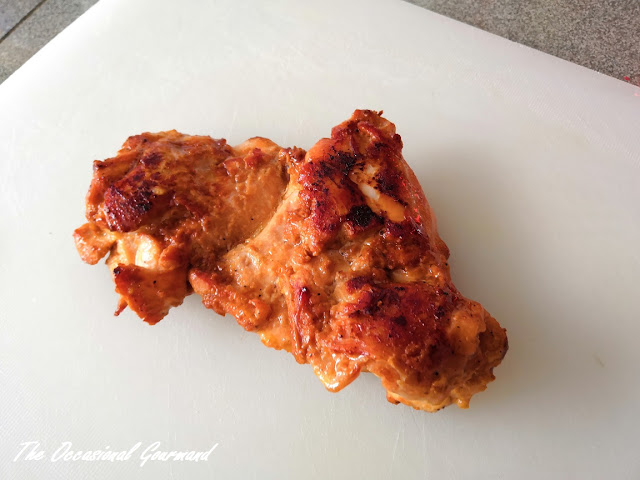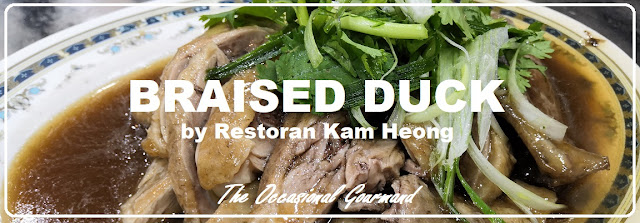From the Kitchen :Lockdown Bootleg Shoyu Ramen, Part 2
Good day guys! Here is part 2 of my bootleg shoyu ramen. If you have yet read part 1, please click here, as a lot of context of this post is based on that.
 |
| Look at all of the accouterments! |
As mentioned in my past post, this post will be on toppings. For most noodle heads, the ramen experience is not complete without the right toppings. Me included. It should be noted that there are a huge variety of topping variants out there and it can be a bit crazy to cover all of them. Some shops use wontons like the famed Michilen starred Tsuta in Sugamo, some have tofu and even kimchi. However, I have decided to focus on the most common ones, which are charshu and eggs!
And I know that chashu is a pork dish and there are a good amount of Muslim readers here. So as a substitute, I have included a tori miso yaki recipe in here. Making charshu out chicken does not really work, as the texture and flavour profile of pork and chicken are very different.
So lets get a cooking shall we?
Lockdown Bootleg Shoyu Ramen (part 2)
Ajitama (味玉)
 |
| Oh yeah! |
Tare:
70 ml soy sauce
20 ml dark soy sauce
230 ml water
1.5 tbsp sugar
4 garlic cloves
1 knob ginger
2 tbsp black pepper corns
2 tbsp fennel seeds
1 cinnamon stick
4 eggs
Steps:
1. Boil 4 eggs for about 7 minutes. Once boiled, stop the cooking by placing them into some ice water.
 |
| Here we are, back again. |
2. To prepare your egg tare, add everything into a pot and simmer for 10 mins or until your kitchen is filled with the aroma of the spices. Cool it down to room temperature.
3. Once you have peeled your eggs, place them into a container and add in your tare. Leave it to marinade for at least 3 hours in a fridge, best overnight. Try your best to ensure that everything is well submerged.
Translated to as "flavoured eggs", ajitama are a common staple in ramen bowls. A bowl just seem missing without it. Also, I do note that I used the word "tare" again here, despite not for the final bowl. But "tare" generally translate as seasoning sauce so any sauce that provides flavour, like marinades or dips are also known as tare.
I also predict that some of you will ask that if this tare can be used for the ramen. The answer, is absolutely yes. After marinading the eggs, remove the spices and reheat the tare and you can put it in your soup. Of course, it will taste more like a Chinese herbal soup instead of ramen.
Kitakata style Charshu (喜多方チャーシュー):
 |
| Decadence! |
Steps:
This is probably the most simple charshu recipe out there. Just repeat the tare recipe from the eggs and then place some pork belly into a pot under a medium boil and braise for about 1.5 hours, rotating the meat every 20-30 minutes.
 |
| Again, low and slow |
You can slice the meat right after cooking, but it will break apart very easily as it is super tender. I strongly recommend that you chill it overnight, and then cut them and finally pan fry or broil before serving.
 |
| Adding some finishing touches |
Some will be asking, how about wrapping the meat into a log? That is how its done in most places. Well, you can if you want. However, it is very time consuming and more importantly, I cannot go out of the house just to get butcher's twine due to earlier mentioned travel restrictions.
Note that even some places do make their charshu this way by not wrapping the meat! The famed Kikanbo ramen shop serves their charshu this way, and the city of Kitakata prepares their chashu this way too. Well, hence the name "Kitakata style Charshu". So this is still a legit way of making charshu for ramen.
Also, if you are so inclined, you can keep the tare for the charshu for the final bowl of ramen, which I did. However, I used it along side my anchovy tare. I already made it anyway.
Tori miso yaki (鳥味噌焼き) :
 |
| This will go very well with rice. |
Ingredients:
Chicken
Miso paste
Soy sauce
Sesame oil
 |
| This new pan is really impressing me so far! |
Steps:
Ok, this was specially made for my Muslim friends out there. I do not want to make you guys miss out on all the fun right? Do note that this chicken dish, which translates to grilled miso chicken, is usually served in bento boxes and not ramen bowls.
It is very simple, just add some miso paste, soy sauce and sesame oil to make a simple marinade. Brush it onto some chicken meat and pan roast it. I used a chicken thigh piece that was deboned and cooked about 4 minutes on one side. I then flipped it over before cooking for another 3 minutes.
Chicken in general, although a component in ramen soup, does not appear as a topping as often. Well, some places in Ichijoji in Kyoto serves karaage chicken on ramen. Now that is a real bomb shell to the senses and a story for another day.
Vegetables:
When it comes to veggies on ramen, as long it does not over power or is too contrasting to the flavour and texture of the noodles and soup, anything is fair game. Most common vegetables would be beansprouts, bok choy and stir fried cabbage that has been julienne-ed. I have also seen fried mushrooms in ramen. After all, shiitakes play a huge role in any ramen bowl. But go easy on the carrots, although I think roasted cauliflower may work.
And on aromatics, spring onions and crushed garlic are very common. Again same rules apply - as long it does not clash with the texture and flavours, it is all good.
For my final bowl, I have used bok choy, with a good helping of spring onions and garlic.
 |
| The finished product! |
 |
| A close up |
There is some science into this arrangement. Firstly, this is to ensure that all of the tare to mix with the soup well. Also, with the noodles before the toppings, it will allow a place for your toppings to rest on and not just sink to the bottom. I mean, a good ramen shot needs to have the toppings afloat right?
In terms on how I work on my bowl, half of my tare is the braising liquid from the charshu and another half is my anchovy one. And for my abura, half of it was the chiyu I made earlier and the other half was sesame oil.
 |
| The baking soda noodle hack really worked! |
Ok that is all folks! This was a real monster in terms of cooking and drafting. A lot of the items here need a lot of low and slow cooking so it would be wise to prep some in advance. Also, if you have 2 burners in your kitchen it will save you alot of time as you can prepare 2 things at once.
Thank you for staying up to the end! And for something that is as rough shot as this, it was really delicious. Do give this a try and happy eatings.








Comments
Post a Comment